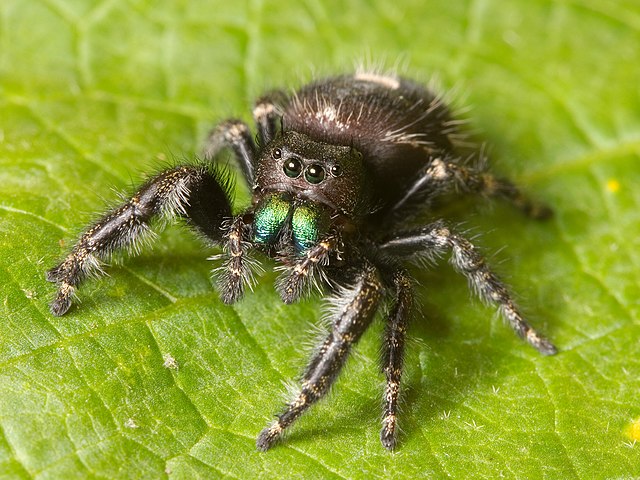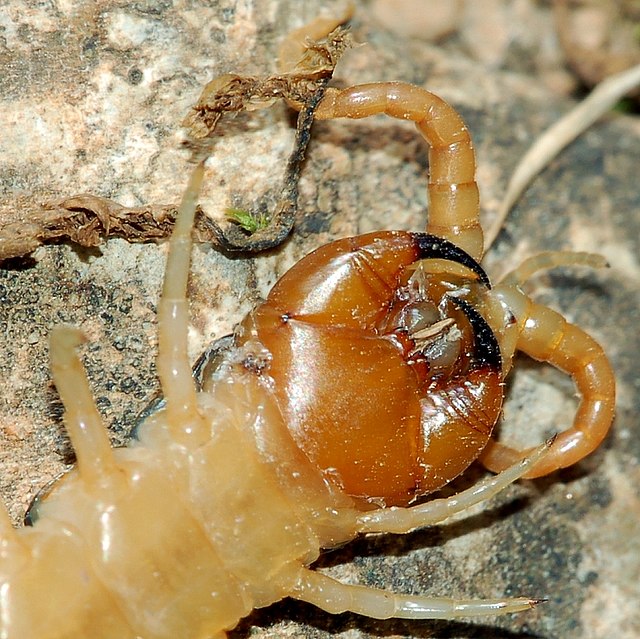The chelicerae are the mouthparts of the subphylum Chelicerata, an arthropod group that includes arachnids, horseshoe crabs, and sea spiders. Commonly referred to as "jaws", chelicerae may be shaped as either articulated fangs, or as a type of pincers. Some chelicerae, such as those found on nearly all spiders, are hollow and contain venom glands, used to inject venom into prey or a perceived threat. Both pseudoscorpions and harvestmen have additional structures on their chelicerae that are used for grooming. In Paratrechalea, males and females have shown to have a chelicerae dimorphism, because the chelicerae is used as a mating signal for females.
The jumping spider Phidippus audax. The basal parts of the chelicerae are the two iridescent green mouthparts.
3D view of the chelicerae of a jumping spider. The pedipalps were removed to see the chelicerae.
The fang is about 2mm long. The spider itself is about 25mm long.
Microphotograph of the same chelicera and the tip of a 22–gauge (0.64 mm (0.025 in)) hypodermic needle
The mouthparts of arthropods have evolved into a number of forms, each adapted to a different style or mode of feeding. Most mouthparts represent modified, paired appendages, which in ancestral forms would have appeared more like legs than mouthparts. In general, arthropods have mouthparts for cutting, chewing, piercing, sucking, shredding, siphoning, and filtering. This article outlines the basic elements of four arthropod groups: insects, myriapods, crustaceans and chelicerates. Insects are used as the model, with the novel mouthparts of the other groups introduced in turn. Insects are not, however, the ancestral form of the other arthropods discussed here.
Figure 1: Chewing mouthparts of a grasshopper. Legend: lr, labrum; md, mandibles; mx, maxillae; hp hypopharynx; lb, labium.
Figure 2: Ventral view of forcipules of a centipede, arising from the first body segment






